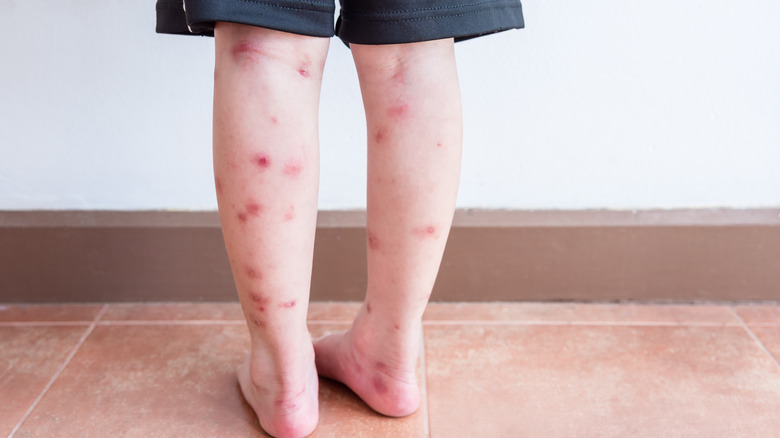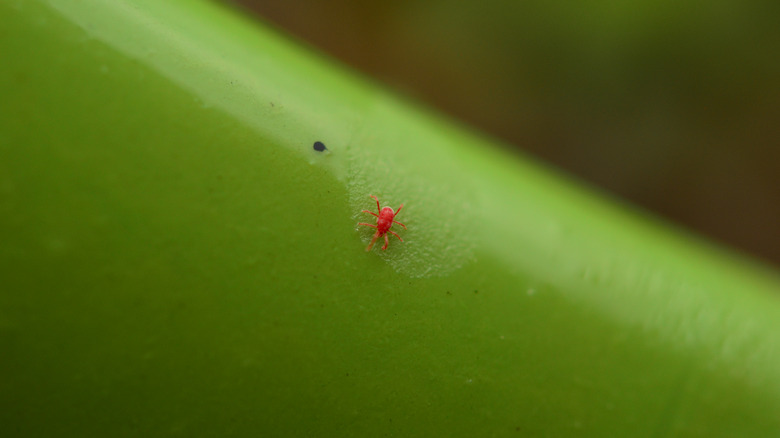What Are Chigger Bites And How Do You Treat Them?
Chiggers are microscopic critters that can cause a world of hurt. These bugs are so small that you can only see them with a magnifying glass (via WebMD). While chiggers are technically called trombiculid mites, they are also referred to as harvest mites and mower's mites. That said, they are actually part of the spider family. Chiggers can be found in just about every country on the planet, but they thrive in wet, grassy areas.
Interestingly, it's not the chiggers that bite people — it's their larvae. Female chiggers lay their eggs on leaves and grass, where they remain until people brush up against them. Once they find their way to your skin, they begin inflicting damage almost immediately. First, they make a small bite, then release their saliva, which kills your skin cells, and then they begin to ingest your skin tissue. The chiggers' saliva triggers itching, which can be quite intense at times (via Cleveland Clinic).
Chigger bites usually get better on their own
While chiggers may be little, their bites can be a big nuisance, and most of the time, you'll notice them around your waist, groin, lower legs, behind your knees, and around your ankles, according to Cleveland Clinic. When the bites begin to itch, the irritation can last for several days to a couple of weeks, per WebMD. Some bites can lead to bumps, rashes, and blisters.
Showering immediately after coming into contact with chiggers can get rid of the ones that are not attached (per University of Kentucky). You can also try brushing your skin with a dry towel to remove them. If itching has already started, Cleveland Clinic suggests using a topical itch cream. You might also benefit from taking an antihistamine medication to relieve itching. Applying a cold towel and regularly washing the area can also help.
Most of the time, WebMD says chigger bites heal on their own. That said, if the areas become swollen or infected, you can always see your primary care physician, who might prescribe antibiotics or steroids.


